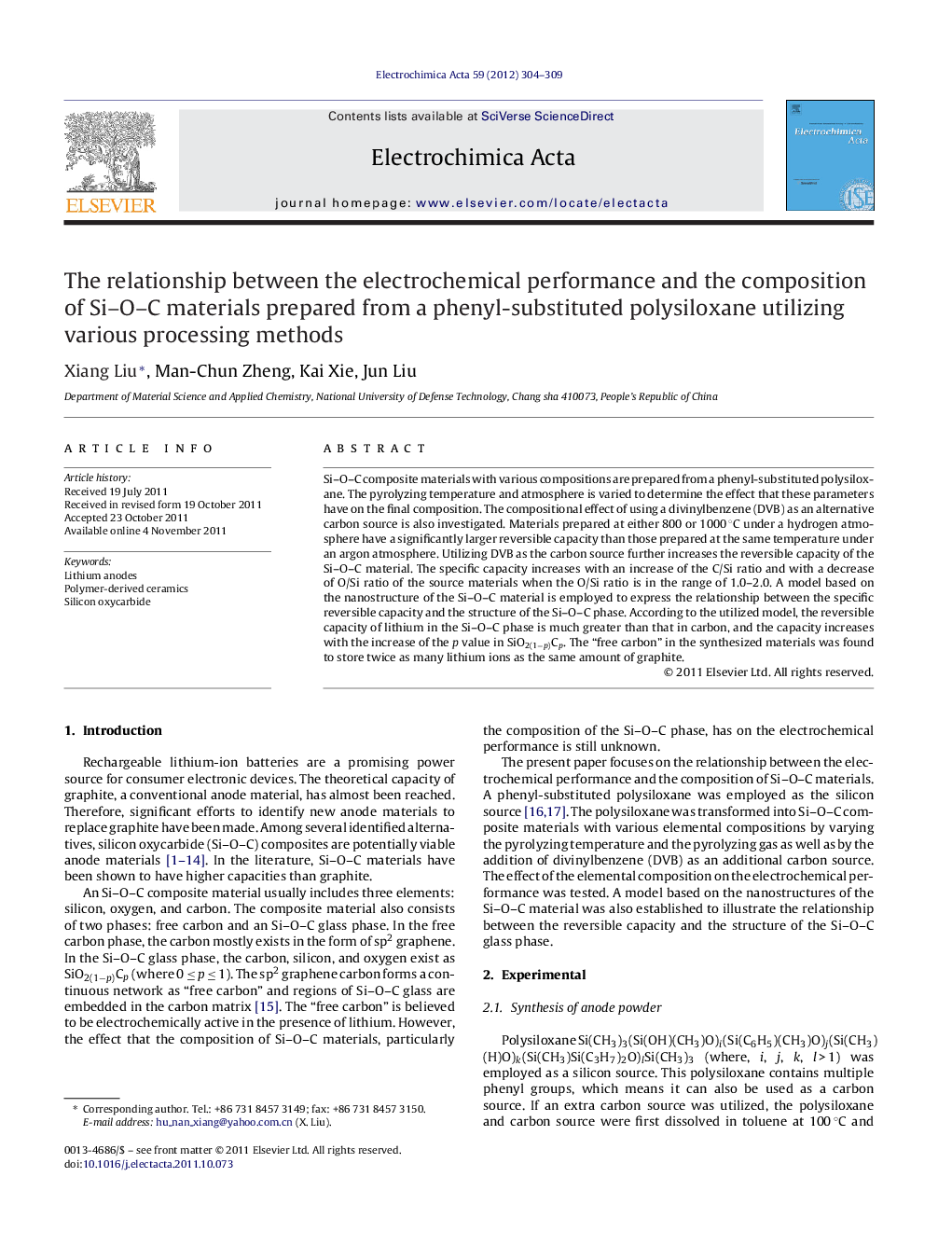| Article ID | Journal | Published Year | Pages | File Type |
|---|---|---|---|---|
| 189347 | Electrochimica Acta | 2012 | 6 Pages |
Si–O–C composite materials with various compositions are prepared from a phenyl-substituted polysiloxane. The pyrolyzing temperature and atmosphere is varied to determine the effect that these parameters have on the final composition. The compositional effect of using a divinylbenzene (DVB) as an alternative carbon source is also investigated. Materials prepared at either 800 or 1000 °C under a hydrogen atmosphere have a significantly larger reversible capacity than those prepared at the same temperature under an argon atmosphere. Utilizing DVB as the carbon source further increases the reversible capacity of the Si–O–C material. The specific capacity increases with an increase of the C/Si ratio and with a decrease of O/Si ratio of the source materials when the O/Si ratio is in the range of 1.0–2.0. A model based on the nanostructure of the Si–O–C material is employed to express the relationship between the specific reversible capacity and the structure of the Si–O–C phase. According to the utilized model, the reversible capacity of lithium in the Si–O–C phase is much greater than that in carbon, and the capacity increases with the increase of the p value in SiO2(1−p)Cp. The “free carbon” in the synthesized materials was found to store twice as many lithium ions as the same amount of graphite.
► Si–O–C composite materials with various compositions were prepared from a phenyl-substituted polysiloxane utilizing various processing methods. ► A model based on nanostructure of the Si–O–C material is employed to express the relationship between the specific reversible capacity and structure of Si–O–C phase. ► The reversible capacity of lithium in Si–O–C phase is much greater than that in carbon and increases with p value of SiO2(1−p)Cp.
